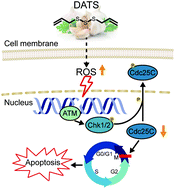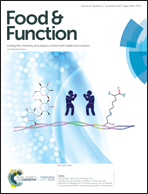Diallyl trisulfide induces G2/M cell-cycle arrest and apoptosis in anaplastic thyroid carcinoma 8505C cells
Abstract
Anaplastic thyroid cancer (ATC) is the most aggressive thyroid cancer. Current approaches including surgery, chemotherapy and therapeutic drugs provide limited benefits for ATC patients. Diallyl trisulfide (DATS) has been documented as a promising anti-cancer agent for various carcinomas. However, its role in ATC tumorigenesis remained unclear. Our results showed that DATS treatment at 12.5, 25 and 50 μM decreased the viability of 8505C cells both in a time- and dose-dependent manner. The phosphorylation of H2A.X, which is a DNA damage marker, was induced by DATS both in a dose- and time-dependent manner. Moreover, DATS mediated the DNA damage through the phosphorylation of ATM but not ATR. DATS also induced G2/M cell-cycle arrest followed by the translocation of Cdc25C from the nucleus to the cytoplasm. Further results showed that DATS induced mitochondrial apoptosis in 8505C cells, evidenced by Hoechst/PI double staining, PI-Annexin V assay and western blot. Taken altogether, our findings demonstrated that DATS induced G2/M cell-cycle arrest and mitochondrial apoptosis by triggering DNA damage in ATC 8505C cells, which shed light on a novel therapeutic approach for ATC treatment.



 Please wait while we load your content...
Please wait while we load your content...